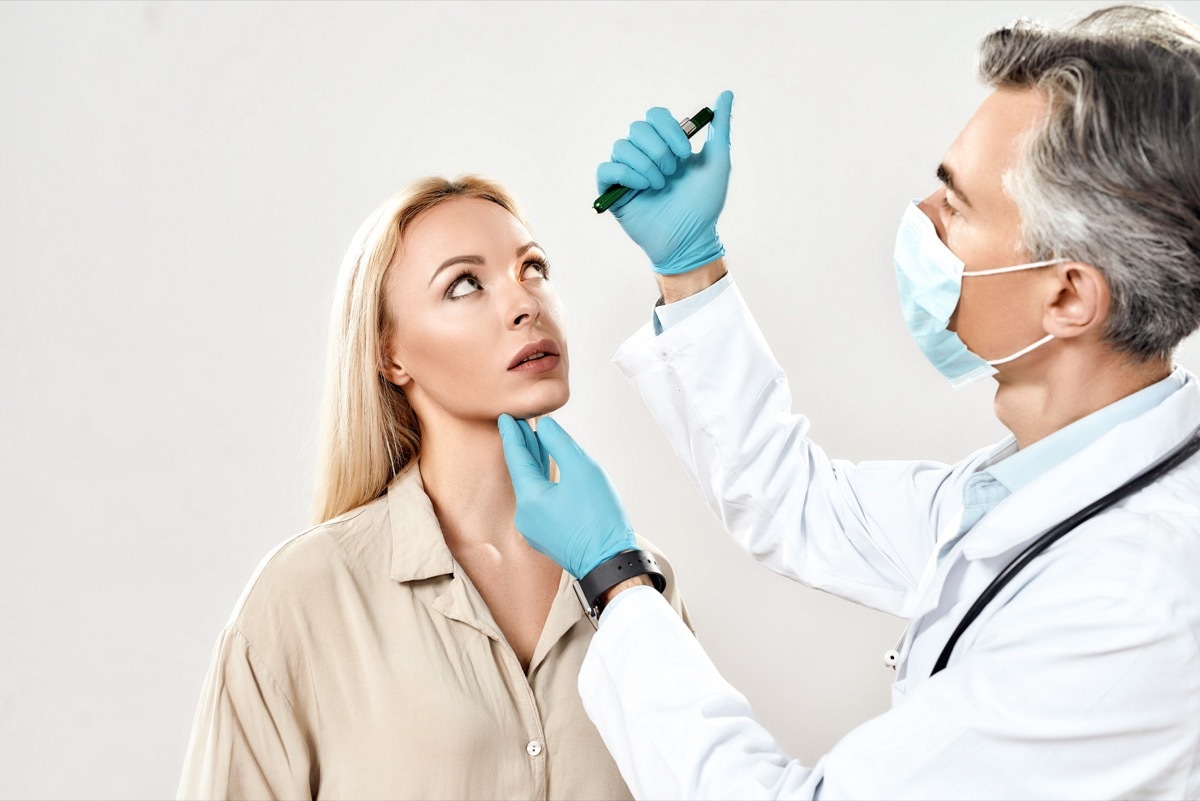If You Notice This When You Look at Lights, Call Your Doctor Now
Under some circumstances, it can be a symptom of a serious condition.

Certain changes to your indera penglihatan are immediately alarming, and prompt an urgent eye care appointment. But experts warn that subtler symptoms often go overlooked, since they may seem relatively normal and unconcerning—and one ocular phenomenon in particular could signal a condition that requires swift medical care. Read on to learn which symptom could be affecting your vision, and how to know when it's something to call your doctor about.
READ THIS NEXT: If You Notice This With Your Eyes, Get Your Thyroid Checked, Doctors Say.
It's normal to see a halo or glare if you look at a bright light.

If you suddenly lock eyes with a bright light—the sun, car headlights, or a camera flash, for example—you're likely to notice a glare or halo surrounding it. When this happens, the light scatters within the eye rather than being processed as normal by the retina. While it's not exactly pleasant, it's unlikely to have any long term consequences for your ocular health or vision. The symptom will typically resolve on its own within minutes to hours, experts explain.
READ THIS NEXT: If You Notice This Around Your Eyes, Get Your Liver Checked.
Under slightly different circumstances, it can be a symptom of a serious eye condition.

That same reaction can suggest a more serious problem if you notice it at night, or when lights are dim. That's because this symptom is often associated with Fuchs' (pronounced "fewks") dystrophy, a condition that can lead to swelling in the cornea (also known as corneal edema).
According to the Mayo Clinic, it's important to "see an eye care provider, who might then refer you to a corneal specialist" if you notice this particular set of symptoms. They add that you should call for urgent care if symptoms develop suddenly. They note that other conditions which may share these symptoms—glaucoma or cataracts, for instance—also require medical attention.
Here's why—and when—it happens.

Fuchs' dystrophy occurs when the endothelial cells in the eye destruct, leading to a buildup of fluid in the cornea, the clear layer of tissue on the front of the eye. This causes the cornea to thicken and swell, triggering a range of symptoms.
This form of ocular dystrophy "usually affects both eyes and can cause your vision to gradually worsen over years," explains the Mayo Clinic. "Typically, the disease starts in the 30s and 40s, but many people with Fuchs' dystrophy don't develop symptoms until they reach their 50s or 60s," their experts add.
For more health news sent directly to your inbox, sign up for our daily newsletter.ae0fcc31ae342fd3a1346ebb1f342fcb
Look out for these other symptoms of Fuchs' dystrophy.

Individuals with Fuchs' dystrophy may notice that as a result of seeing halos or glare when looking at dim lights, their night vision is poor. Patients may also notice blurred vision, fluctuation in vision which starts poorly at the start of the day and then improves, small blisters on the surface of the cornea, eye pain, or the appearance of cloudiness on the eye.
Speak with your doctor if you believe you are displaying symptoms or Fuchs' dystrophy or corneal swelling.
READ THIS NEXT: If You See Eye Floaters, It Could Be a Sign of This Chronic Condition.

Pria berusia 110 tahun berbagi apa yang dia makan dan minum setiap hari untuk menghindari semua penyakit besar

Chase Bank Customer, bersiap untuk "perubahan besar," kata Head
